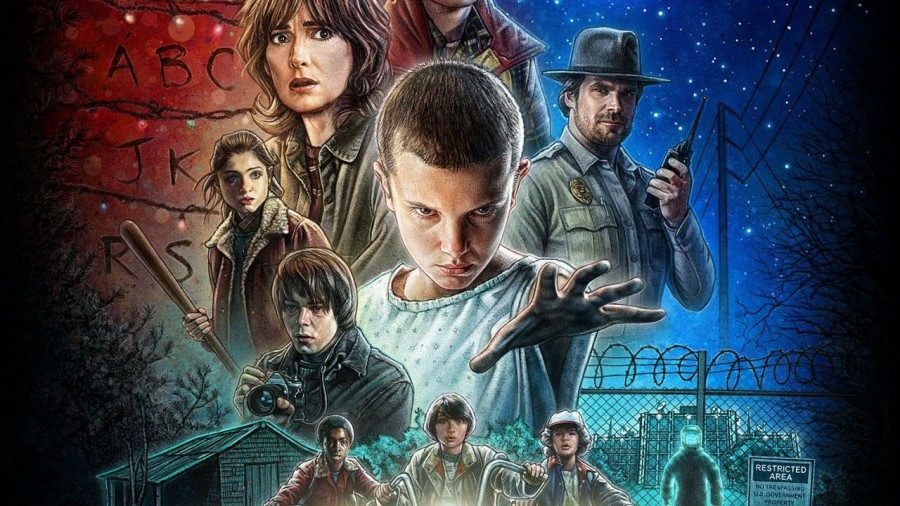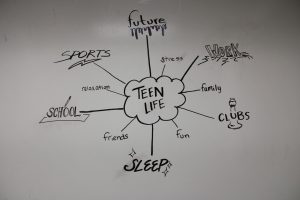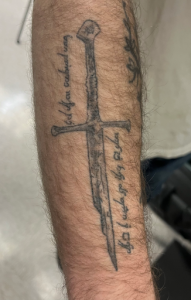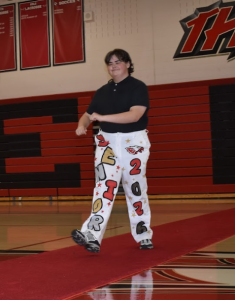Depiction of 80s: Stranger Things
November 15, 2017
With the release of the second season of Stranger Things, we scramble to find a way to relate back to the 80s. The show does a phenomenal job absorbing the audience into the story and character development. It gives those who lived in the 80s that nostalgia they’ve been craving. The real question still lingers, however, “Is Stranger Things” an accurate depiction of the 80s?
The only people that would know how accurate the depiction of the 80s is in the show would be those that lived in that era. Keith Proctor, English teacher and department coordinator, spoke on the realism of the show, “Overall, yes. I think they do exaggerate to try to kind of build on the nostalgia to get the audience, like especially people my age, to watch more.”
This brings up the very valid argument that the show does overdo the development of the characters. Though they were fantastic being a modern depiction of characters in the 80s, some of those who experienced the decade felt it was exaggerated. There were times when even those who didn’t live in the 80s felt it had been a little bit too much of a push to be an 80’s film.
In no way, shape, or form is it being said that the newest season was poorly made. It wasn’t, at all. There were many well done things like CGI, casting, and setting that they added to make the show like an original 80’s film with the added effect of beautiful storytelling. Memorable storytelling and fair setting is what can turn a low class student film project into a hit all across the world.
Stranger Things tells a very well established story that’s supposed to be set in the 80’s, but how well can a fictional story be told while being set in an actual time period in America?
Proctor comments, “Something that really bugged me was the inaccurate use of walkie talkies.”
That was something most millennial viewers overlooked entirely. No walkie talkie would actually be able to send out a strong enough signal like the one this show depicts.
Critiquing a walkie talkie not being realistic in a show may seem ridiculous but it has a bigger argument than most would perceive. Stranger Things showcases its brilliance with these walkie talkies, and it’s used for plot development. In order to keep the plot on track with the rest of the story, they use walkie talkies to easily get the characters to communicate with one another. They were so enmeshed the story that the walkie talkie aspect didn’t matter.
That’s what makes Stranger Things brilliant. They were able to successfully move the plot at their own pace and the viewer wouldn’t even notice the way they did it with the walkie talkies. Stranger Things executes the walkie talkie strategy perfectly.Though it was unrealistic and very big in terms of plot development, the walkie talkies in this show further it’s brilliance as a show.
Gregory Watts, a Social Studies teacher, thought otherwise, “You know that scene in one of the episodes where the little girl is playing with the little He-Man action figure? That and a lot of other references really gave me great nostalgia for when I was younger. Overall I thought it was a good show, they did a really good job.”
This brings up another very valid argument. The little references and details in the show really does pinpoint the correct amount of nostalgia for some of those who lived in that era. The He-Man doll is definitely a nostalgia point for many viewers. He-Man was a very popular cartoon in the 80s that had a large influence on the children of that time period.
Stranger Things is a fair depiction of the 80’s. It may not be the best, but it’s definitely not the worst. People should be open to giving this film credibility for being set in the 1980s. It had quite a bit of overexaggerated points, but it also had a lot of subtle references that hit viewers at home.







